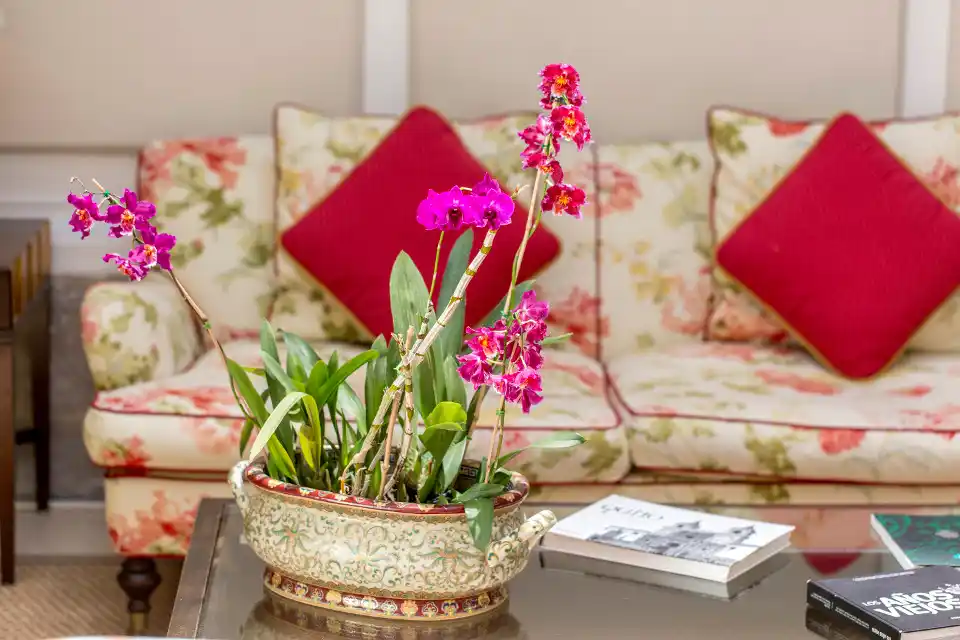One of the first things to do in Quito when you have arrived at Casa Gangotena is to explore its surrounding neighbourhood. The historic mansion isn’t just a luxury hotel, but an integral member of a buzzing and vibrant community, which happens to be one of the most fascinating and idiosyncratic ones in the Ecuadorian capital.
The neighborhood of San Roque, situated in Quito’s Old Town, is one of the city’s most traditional areas. It’s home to a variety of local artisans and tradespeople, including practitioners of traditional medicine, the Historic Centre’s last miller, vendors of fruit and chicha, and craftspeople involved in religious trades and the creation of century-old sweets. Many of these individuals are participants in the Guardianes del Patrimonio (Heritage Guardians) project, an initiative aimed at preserving the traditional crafts and professions that are gradually disappearing in other parts of the country that have undergone modernization. This project not only seeks to maintain these age-old traditions but also offers travelers an intimate glimpse into the historic ways of life in Quito.
Before you begin
- Rise early and begin your tour in the morning – rain is more likely in the afternoon, making it more important to tick off your outdoor things to do in Quito before lunch
- Wear comfortable shoes and get ready to walk
- Bring a bottle of water
- Put on plenty of sunscreen and wear a hat
- Keep a rain mac or small umbrella in your bag
- Bring small change to buy the herbs, juices, and treats you encounter along the way
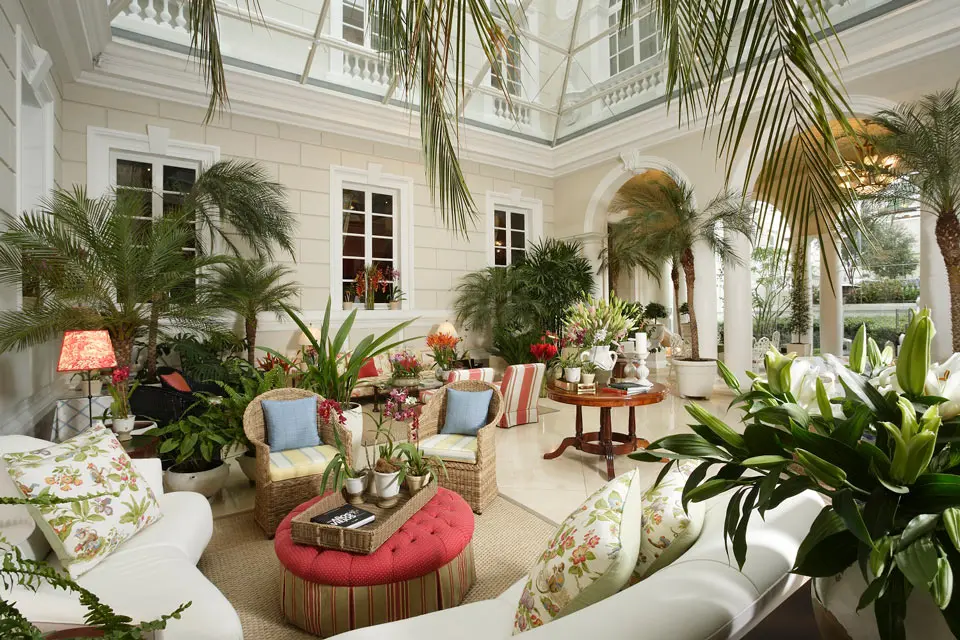
Away We Go!
Setting out from Casa Gangotena’s garden, take some time to explore Calle Cuenca, inhaling the rich aroma of spices coming from the shops opposite the hotel. On this historic side street, you’ll find the Casa del Alabado museum of Pre-Columbian art – worthy of a couple of hours of exploration in its own right.
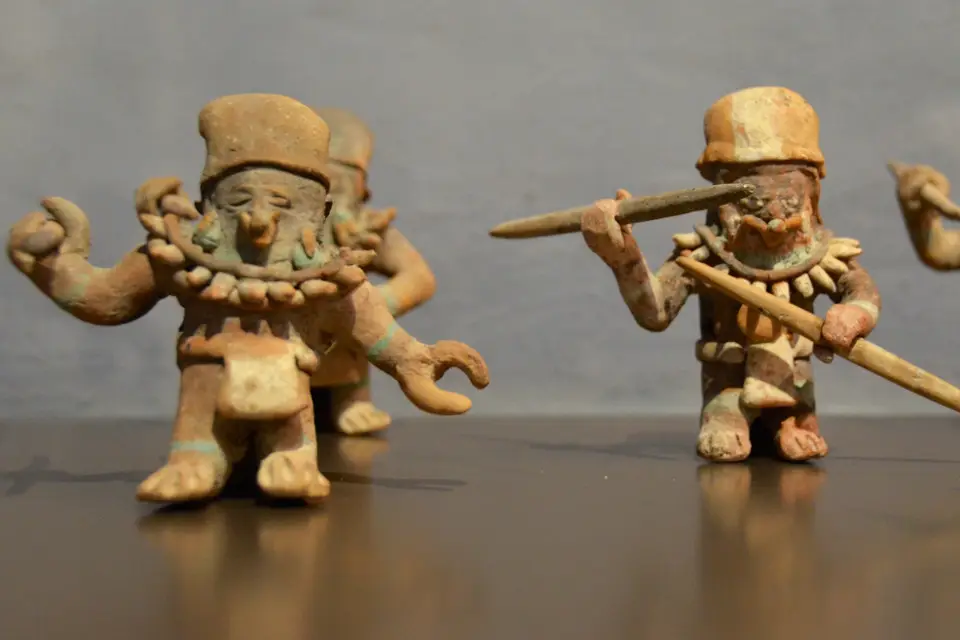
As you arrive at Calle Rocafuerte, across the road you will notice Santa Clara, a beautiful temple with altars from the late Renaissance and early Baroque period and an unusual number of sculptures from the Quito School of Art. Unfortunately, it remains closed most of the time (catch it open on Sunday mornings for mass).
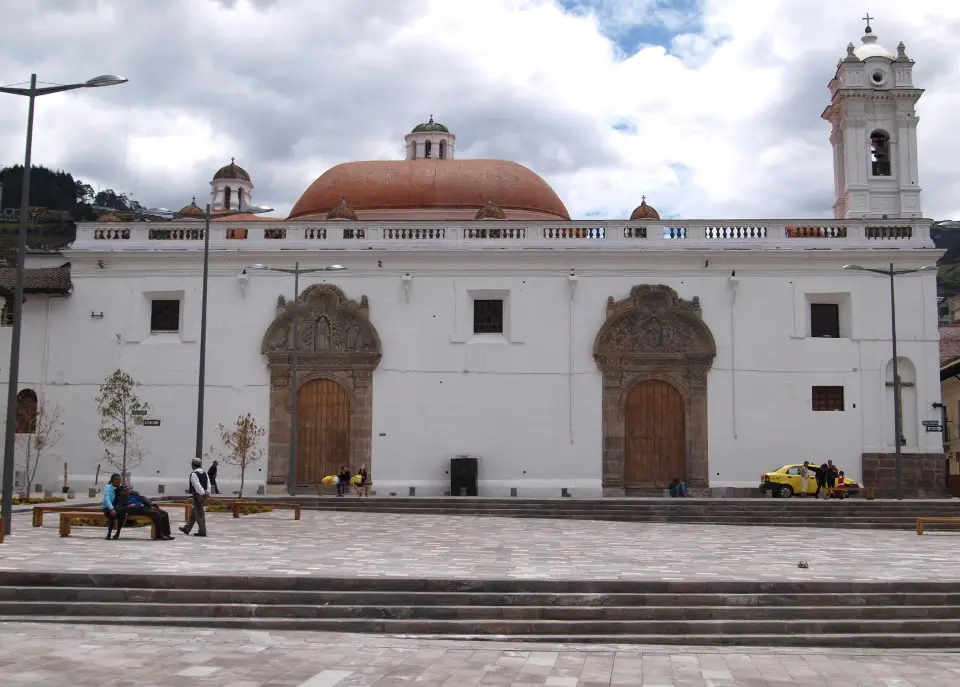
Turning right and heading up the hill, you suddenly have the sensation of having stumbled into the real Quito, where day-to-day normalities for the residents might seem charming and exotic to visitors. This is the street on which Quiteños come to buy their groceries and necessities, to eat and socialise, and to run errands that are often dictated by the depth of their Catholic faith.
Herbal Healing
As you meander through the neighborhood of San Roque, you’ll encounter shops brimming with herbs, spilling out as though they’re sprouting from an enchanted forest within. The palette of colors is vibrant: purple amaranth, vivid green lemon verbena, the soft whites and yellows of chamomile, golden mashua (a knobbly tuber related to the potato, renowned among locals for its prostate benefits), and the rich green of guayusa leaves (an Amazonian plant traditionally brewed into a stimulating tea).
The area bustles with displays of meats in cabinets, fluffy empanadas, and a seafood café where fresh clams await their cleaning on the counter.
Dotted among these are a series of herbal pharmacies, establishments that resemble traditional chemists at a glance, but upon closer inspection, you realize that pills and synthetic chemicals have been replaced by the healing powers of plants. At the entrance, bouquets of flowers and herbs beckon, available for purchase for those inclined to brew their own therapeutic teas at home or to sip on-site. Agüita de la vida, or ‘water of life,’ is a concoction made from 25 medicinal plants, including linseed, oregano, valerian, and “horse tail.” A glossy placard extols its numerous health benefits: alleviating kidney and liver inflammation, purifying the blood, and easing stress and nervousness. Sampling this miraculous potion is a revered tradition in Quito – a sip could introduce you to its restorative properties.
Beyond the party supply stores, with their unicorn piñatas and flamboyant decorations, lies El Buen Café. This establishment is among the most cherished traditional coffee shops in the neighborhood of San Roque, offering a perfect spot for a caffeine boost. It’s a necessary pit stop to gather energy before continuing your ascent up the hill.
The Last Traditional Miller
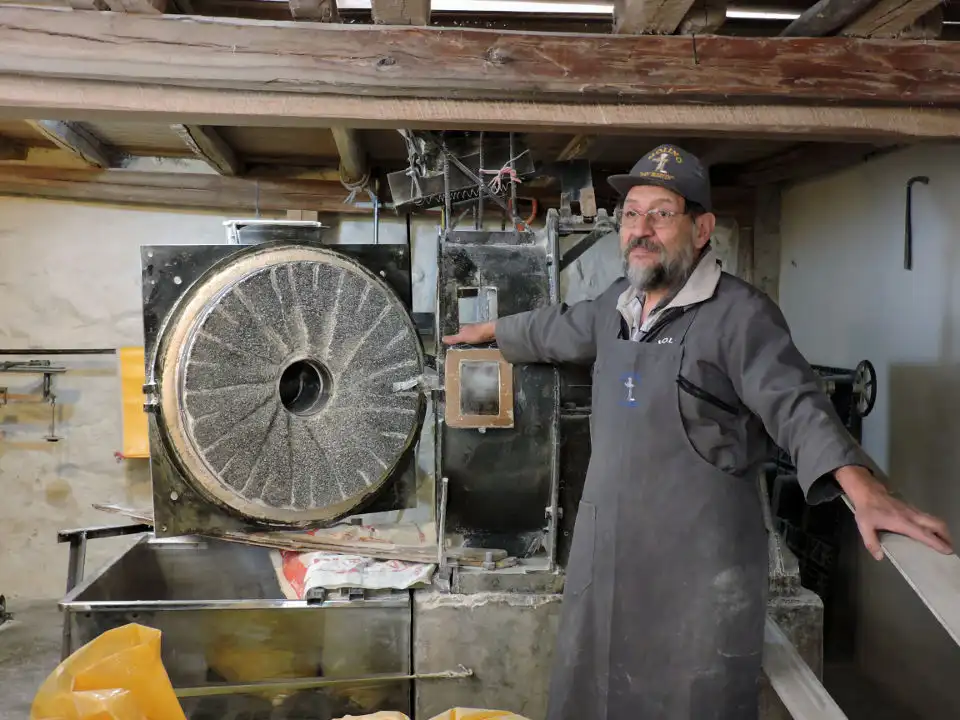
Upon heading up the hill, you’ll reach Molino San Martin – the last traditional miller in the Old Town. The mill is a neighbourhood stalwart that has occupied the same spot for over 50 years and its customers include local families, bakeries and even Casa Gangotena (the hotel acquires ground maize and various flours for its daily baked bread from here).
The twin Calvopiña brothers – both grey, bearded with mischievous and twinkling eyes – are third generation millers, whose grandparents began the business in the middle of the last century. The great slab of a stone of their traditional mill machine is from Denmark. The motor is from Germany, a relic of World War II.
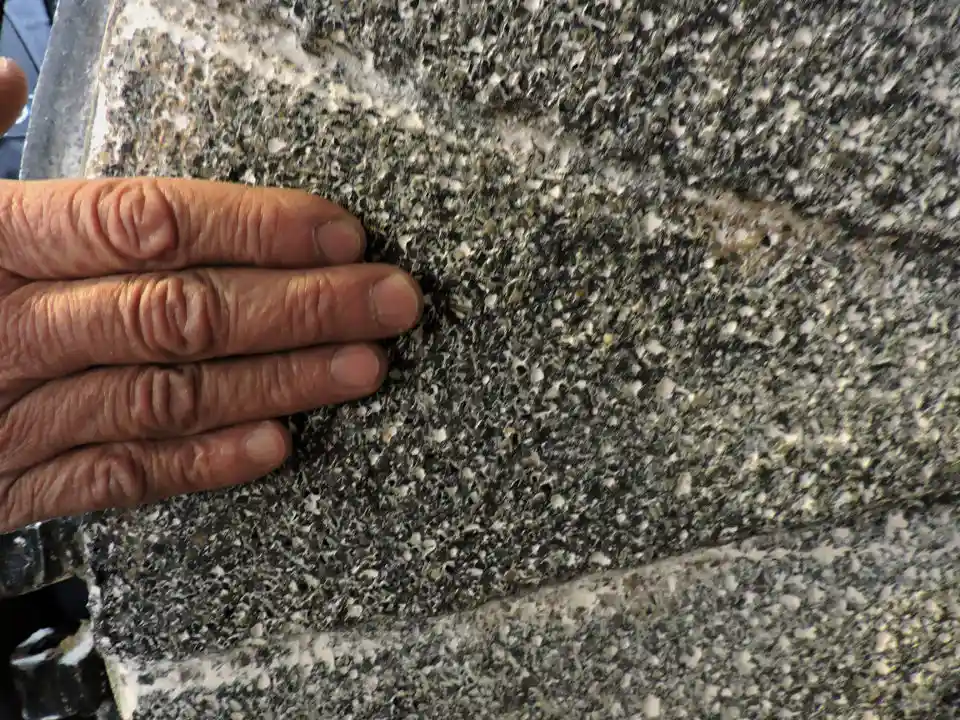
“It’s tricky to maintain antiques like these, but luckily my son is an electronic engineer who keeps it all running smoothly,” explains one of the twins. “But he’s pushing the family to update the equipment in line with technological advances. We’re going to have to modernise.”
One popular, exceptionally Quiteño product is machica, which consists of a mixture of ground barley and panela, traditionally given to children in milk and juices or on bananas to help with digestion. It’s also packed with calcium and iron for growing bones and, not to mention, incredibly delicious.
Quito’s First Covered Market
Up the street we go, pausing at the big beautiful roses that are worthy of any grand gesture and sold for a pittance, until you finally arrive at the market. Built in 1893, Santa Clara was the city’s first covered market. Its original roof, designed by Gustave Eiffel’s company, is now the striking art deco roof of the glass palace at Itchimbia park
San Francisco market might be one of the most eye-opening things to do in Quito for visitors, but it’s very much a functioning marketplace, where locals come to pick up their essentials and grab meals on the go. Here, vendors wear smart uniforms and the space is kept rigorously clean. Signs are trilingual: Spanish, English and Quechua. Many of the buyers and sellers are indigenous.
Like alien pet shops, there are stalls of fruits of all textures, shapes and colours: spiky soursop (guanabana), hairy coconut, papery melon and golden taxo (banana passionfruit), shaped like a little banana.
You’ll find a beaming vendor standing on a podium behind her shrine of fruit. Opposite that, a woman stands behind a counter of chicken placed with their feet up in the air, a trick that local folklore suggests will make them taste better. It might even be a legend you yourself can put to the test as one of your things to do in Quito.
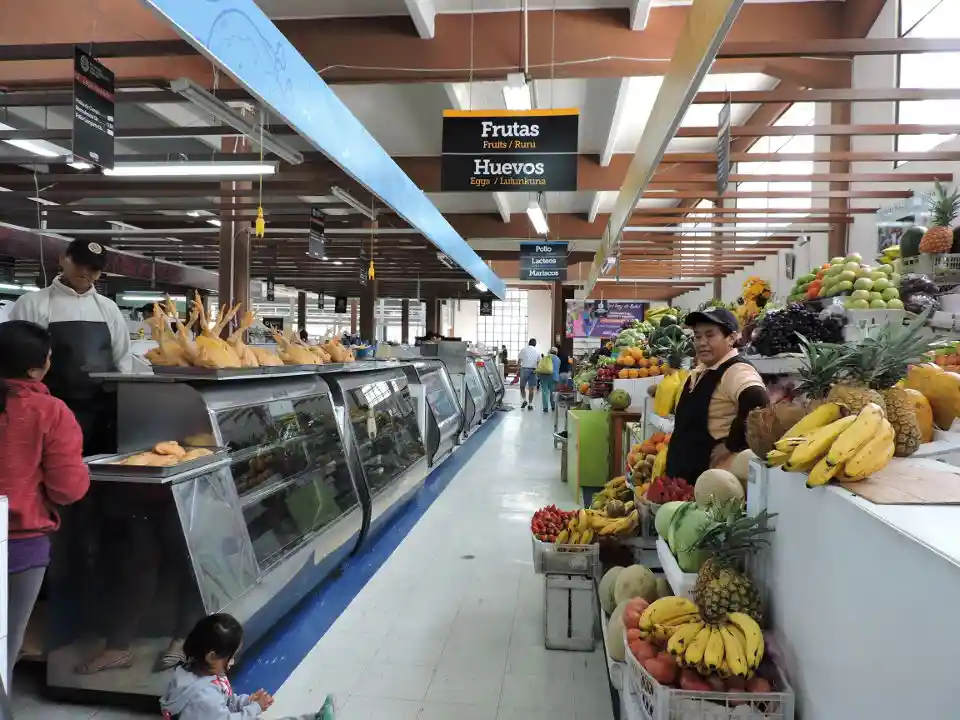
You might well bump into Pati, a sparky tour guide for Guardianes del Patrimonio. “There’s pretty much nothing going on in this neighbourhood that I don’t know about!” she says with a chuckle.
On the frontline of the battle to protect traditional jobs and crafts, she runs a stall selling juices and chicha de jora, a customary drink containing seven types of grains. The recipe and process, learned from her grandmother, involves leaving the mixture of ground grains in a dark, humid place to ferment, and then boiling it for six hours with roots, spices and herbs. This one’s not alcoholic (nor does it contain the saliva of the maker, unlike in the Amazon Basin) but there are dozens of variations of chicha found across Ecuador.
Love Potions and Medicinal Eggs
On the far side of the great hall, you find the Ancestral Medicine section of the market, a row of stalls bursting with bushy herbs that are often found competing with each other with their neon disco lights and dubious-looking love and heartbreak potions. At Mama Rosita’s stall, a baby is being cured of espanto, a state of shock and fear that the Andean indigenous community says is brought on by bad energies and spirits. Except that the baby doesn’t look very shocked or fearful, gurgling and bouncing as Mama Rosita runs a bunch of specially selected herbs and flowers over its chubby, little body.
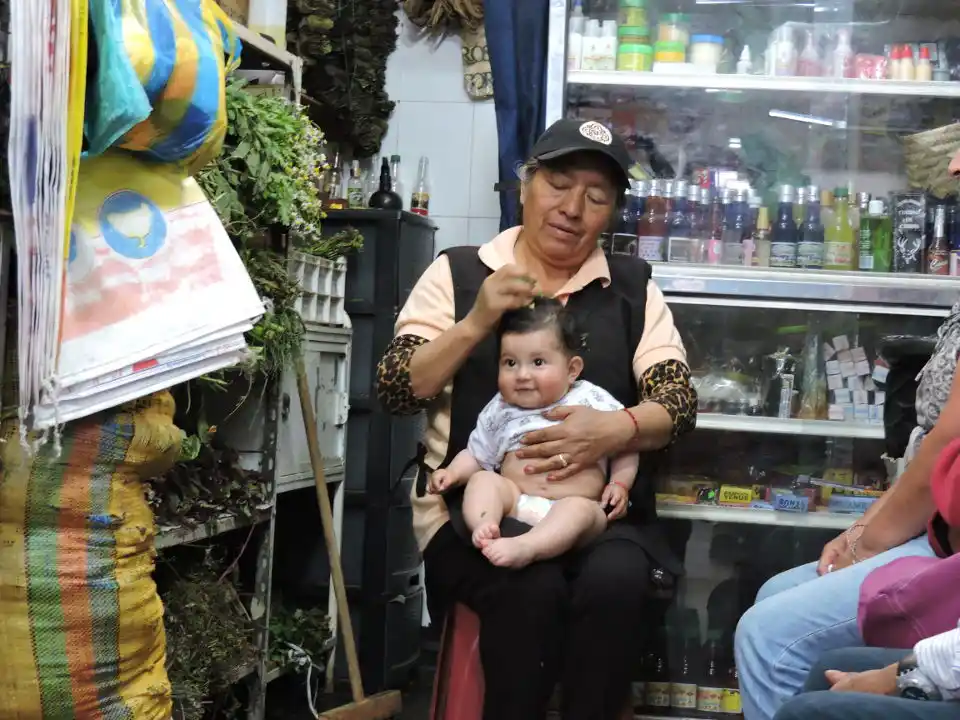
A fourth-generation healer, Rosita makes a living from ridding people of all kinds of bad vibes via a process called a limpia, or spiritual cleansing. Helping with ailments that range from stress to envy, the process begins with being hit or brushed with stinging nettles. Then, bitter herbs such as Santa María and flowers like rose petals are used. Sweet herbs like mint and lemon verbena often conclude the session. Sometimes, she even uses eggs on older people.
“My limpias have an instant effect, people sometimes even get dizzy and start crying,” she says.
You can have your own limpia either here in the market or in the privacy of your bathroom at Casa Gangotena. It may very well be one of the things to do in Quito that will manage to connect you to local spirituality and beliefs. Tuesdays and Fridays are the most popular days, as the process is said to be most powerful on these days in particular.
Patience, Sweet Patience
With your alien fruit and love potions purchased, head back out into daylight and down the hill, cutting across Calle Chimborazo until you reach Calle Simón Bolívar. As you descend, stop at Colaciones Cruz Verde. Here, Luís Banda stands in the doorway of the shop that his family has owned for 103 years, his large copper pan hanging by a rope from the ceiling. In this great cauldron, peanuts and sugar roast over red hot coals, as is the process of making a favourite Quiteño snack, colaciones. It will take three hours to make a decent batch, but Luís is patient and has nothing he’d rather do than stand at his doorway, watching neighbourhood life go by. Behind him, a row of framed newspaper articles from the last century lines the walls.
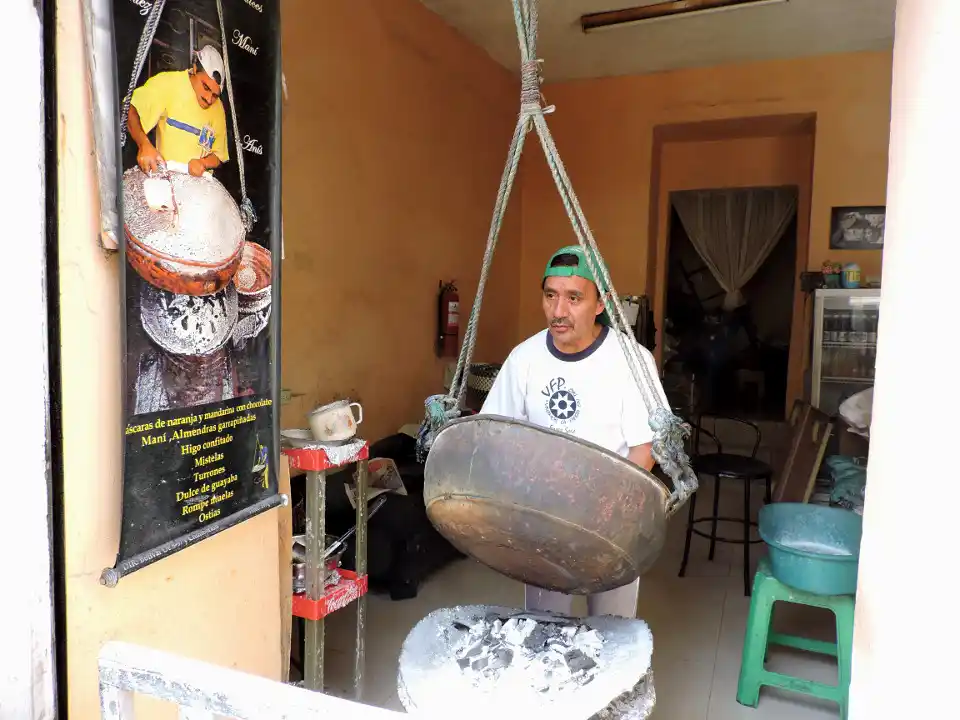
A little way down, turn right onto Calle Imbabura, where you’ll find a shop selling religious statues of all sizes. The shop also fixes painted saints and figures of baby Jesus. The owner also paints the faces of ‘lastimados’ or injured people to improve the appearance and healing of wounds, some 60-70% faster, they say (it has something to do with the zinc in paint). If you’ve got a wound to heal or a blemish to hide, this is one of the more unusual things to do in Quito that few Quiteños will ever experience.
An Arch Beauty in the Neighborhood of San Roque
When you reach Calle Rocafuerte again, head back down the hill until you come to the white and shining Carmen Alto church. Bridging both sides of the street, from the church to the Museo de la Ciudad, is the glorious Queen’s Arch, a majestic Colonial construction where locals seek shelter from the city’s frequent bursts of rain, as was intended when it was built in 1727. Running for cover from the rain is a classic thing to do in Quito.
The Queen that its name refers to is the Virgin of the Angels, an icon that is found in a chapel over in the former hospital where the City Museum now stands. She was worshipped by Mariana de Jesús, the country’s first saint, who happened to live on the same grounds where the church now stands. When Mariana died in 1645 and left her home to the Carmelite Nuns, the church they then erected in its place became so popular with worshippers that, during Saturday mass, people would spill out onto the street, getting drenched in the Quiteño showers. The arch was built to protect them, becoming a symbol of devotion for the city’s first saint.
The City Museum
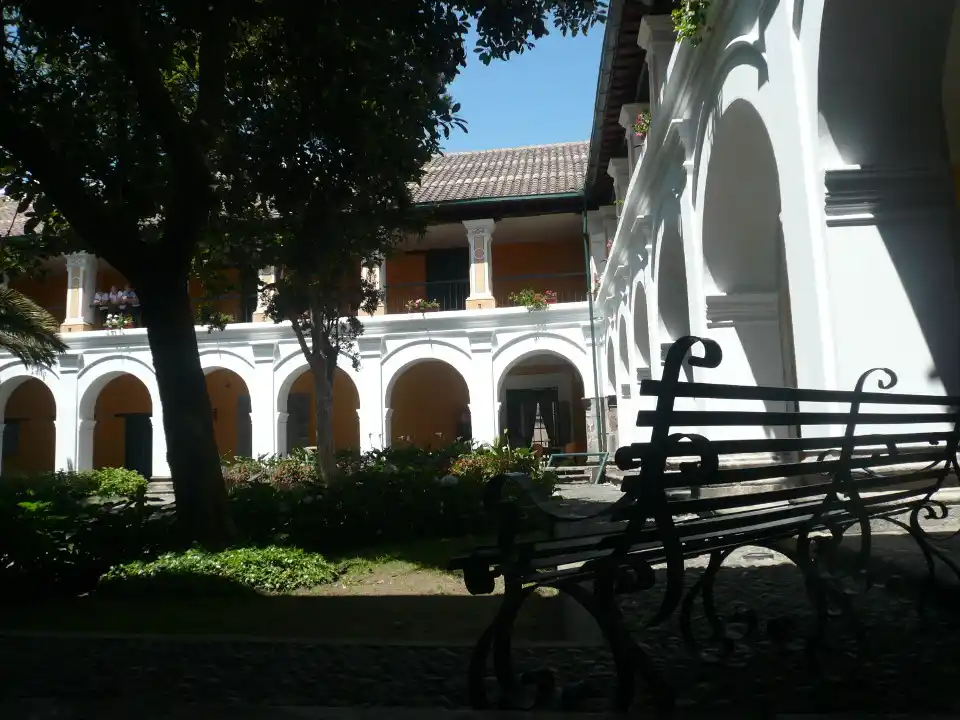
If you turn right onto Calle García Moreno, set aside an hour-or-so to explore the Museo de la Ciudad, which was formerly Quito’s first hospital. It now acts as a monument to 500 years of the city’s rich and sometimes explosive history. Among the sunny yellow patios (over which the white towers of Santa Clara peep over, giving you a distinct sense of where you are) where the old pharmacy and operating room are preserved and displayed, you’ll find exceptional artworks, like the triptych in the staircase by contemporary Ecuadorian painter, Jaime Zapata. These three tortured paintings portraying the progression of the Spanish conquistadors depict beautiful indigenous warriors and hellish Spaniards, their skull faces contorted and grotesque.
There are also temporary exhibitions here, like the marvellous desMARCADOS, a tribute to indigenous protest, including a timeline, tapestries woven with revolutionary messages, and beautiful, moving photography.
In the back patio of the museum, a brilliant modern space that blends satisfyingly with the antique hospital, there’s an exit onto Avenida 24 de Mayo and on to La Ronda, another of the Old Town’s historic streets – exploring it is one of the unmissable things to do in Quito. Cross the metal bridge and take the stairs down onto the street to continue your adventure, or head back to the entrance to wind down your tour.
Back on Calle Rocafuerte, heading uphill now, spot the sweets, colaciones, and delightfully named caca de perro (dog poo), which is another peanut-based snack that will happily lead to tooth decay. On your right, you’ll pass a handful of shops selling opulent and elaborate robes, rich in the jewel tones of turquoise, mustard and scarlet, made in miniature, as if for a tiny pope.
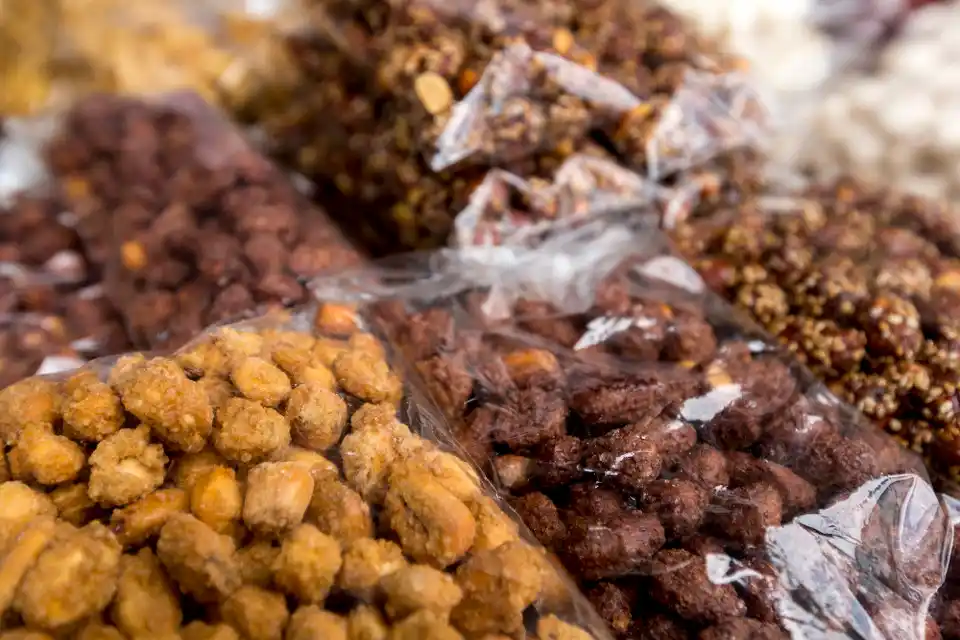
These amazing outfits are destined to clothe the Niño Bendito, the Christ Child doll that Catholic families pass deferentially between members each Christmas. Though each family has its own specific traditions, each year has members buy brand new, dazzling garments. Some Christ Child dolls are dressed in military or police gear. These are bought by the religious armed forces, who have their own Christ Child displays.
Back to your Casa (Gangotena)
It’s only a short stretch before, once again, you come to Calle Cuenca where you can turn right and seek refuge in the oasis of calm right there in the hotel’s garden. Be sure to rest those weary feet and then quench your thirst with Casa Gangotena’s agua de frescos drink. It’s one of the most Quiteño things to do in Quito available!
